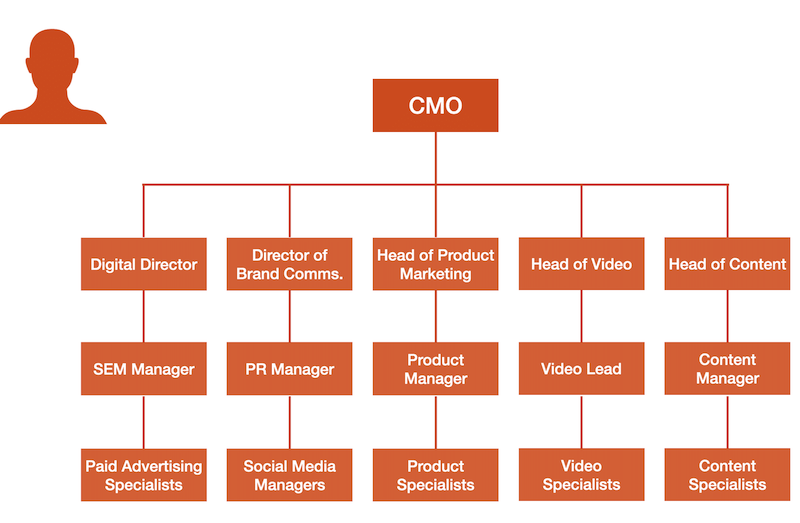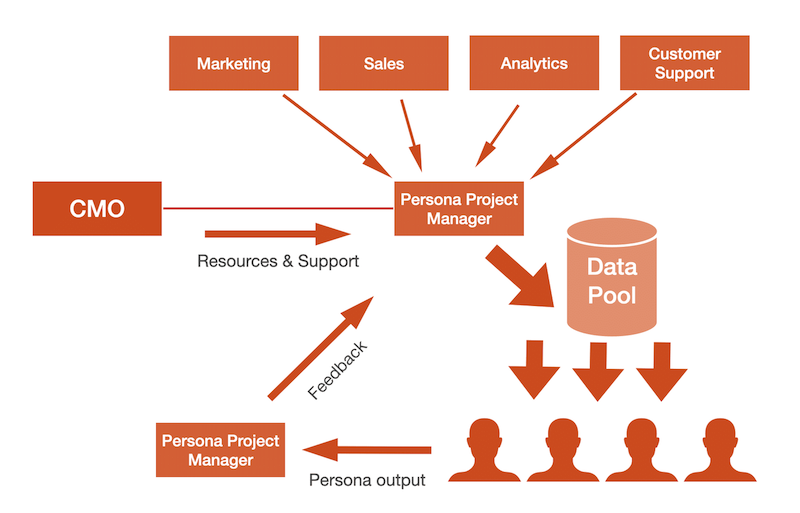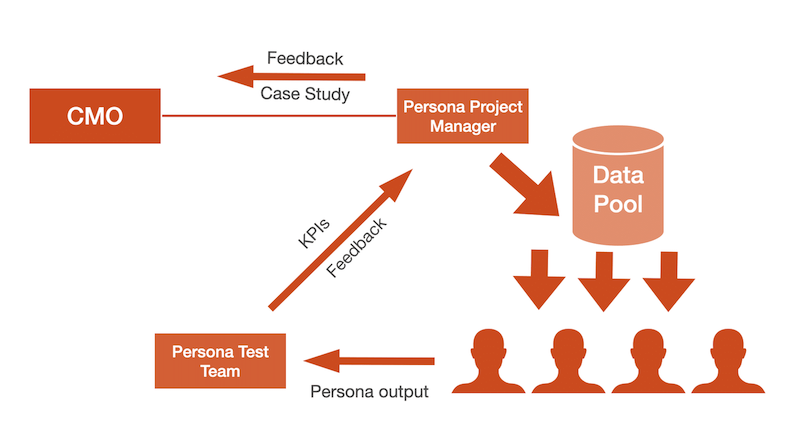An unsolvable dilemma?
Can personas be used for any organization type and size? The answer is yes, but the complexity varies dramatically for many reasons. If you are a small to medium-sized organization,
buyer persona creation should be a top priority because it is a beautiful way to understand customers’ needs. For many, personas are seen as the most critical tool to achieve customer-centricity or even product-market fit. However, the larger the organization, the more complex it gets, and here is why.
Content
Decentralization
The larger the company, the more decentralized it is in most cases. This means that data collection becomes more complex and tedious. Not only because of different data silos and data formats but also because often different regulations have to be considered.
Different departments use legacy systems that do not necessarily work well together — knowledge of how the systems work is often not in the organization itself but outsourced to external consultancies. The same goes for options to adapt the systems. Take a look at COBOL systems in the finance industry, and you know to what extremes legacy systems are driven.
When other agile industries talk about data lakes and APIs, in reality, quite a few organizations are happy to get their data in CSV.
Data Volume
The size of a company is not determining how much data is at disposal to create personas. The probability that large, established companies have created more data than new and smaller organizations is there. But is it valuable data? For once, is the data accessible as mentioned above, but more importantly, is it the right data?
Data people are always talking about noise. With that, they do not mean the annoying co-worker chatting about the weekend but how much additional data is in a dataset that does carry meaningless information for the task at hand. Especially in legacy systems with lots of collaborators in the past and one or two attempts at cleaning up the data thrown in the mix, the noise-to-signal ratio can be daunting.
Customer Complexity
The larger the company, the longer it usually exists. This is accompanied by entrenched structures, processes, and usually also a picture of the customers. But companies that have been successful for a long time often fail quite quickly if they cling to their core product for too long and do not respond to changing customer needs. Do you still remember a company called Nokia? I think you know what I mean! Customer needs are constantly changing, either due to external influences such as this pandemic we are in or due to an innovative competitor who can quickly poach the customers. Some companies have been working with the same personas for decades without updating them. This may go well for a long time, but at some point, it goes bang, and then you have to try to break up the old structures in no time and adapt processes, products, and ways of thinking. Good luck with that!
Persona Scope
If a company sells a single or few products, persona creation is usually a straightforward process. Of course, data collection and analysis must be done correctly, but it is relatively clear what the personas need to be created for. There is usually a single analytics tool in place as well as a centralized marketing and sales team. Defining the requirements and expectations accordingly is rarely a challenge. Imagine a company that sells hundreds, maybe thousands of products in different markets and has made it its mission to prioritize customer-centricity.
What scope should persona creation take so that it is target-oriented without completely overwhelming the departments? There is certainly no universal answer to this. However, large companies should be aware that the more they try to represent as many customers and products as possible in the personas, the more superficial they become.
Let's take a step back and remember the main reason to create personas to get a clear understanding of customers' needs, emotions, and triggers. How will this work if, for example, you try to map a customer who wants to buy a pair of pants into the same persona as a customer who is thinking about buying a new bed? It just doesn't make sense. Of course, especially at the beginning, it doesn't make sense to generate personas for every single product if the product portfolio contains hundreds, maybe even thousands of products. It would probably completely overwhelm the marketing and sales teams. A middle ground has to be found to lead the teams to a persona-driven strategy slowly.
Persona Creation for large corporations? - Solved!
Marketing departments of a certain size are usually structured very similarly. The CMO supervises the various marketing departments. There is usually one executive at the next level below, such as the digital director or head of content. How many employees there are at each level depends on the number of products and the company’s size.

If you plan to drive a persona-driven marketing strategy, you will have two major pillars, the persona creation itself and the correct implementation of the personas in the 3rd or at the latest in the 4th level.
However, this does not mean that personas must be created from the 3rd or 4th hierarchy level. Ideally, persona creation is a matter of the heart for CMOs who have realized that the success of a company in the future depends on how well they engage with customers and specifically address their needs.
Involving different departments is important in that they may have helpful data sources rather than asking them for their opinion or their view of customers. Before the innovative possibilities of data analysis, such interviews and input were essential to creating a picture of the customer in the first place.

Persona creation should include the executive team to gather resources and gain initial acceptance at a senior level. In most cases, it makes perfect sense to have a project manager on board who supervises the data collection and input from the various departments. Since the success of persona creation depends mainly on data collection, cleansing, and analysis, this project manager should have an appropriate understanding of data.
Find a suitable team led by an agile manager who is willing to try new things. Ideally, there is already a relationship between the project manager and the team that will take care of the implementation and promotion of the personas afterward. He could also already be part of the team. In order to achieve the acceptance of the personas, a corresponding case study must be created after a successful test and this must be sent to the various teams.

We have already seen how some customers successfully build their team in the 3rd hierarchy level around the personas. For example, a technically savvy SEM manager and his team take care of those personas that react less to lurid ads but prefer clear, technically driven information. This then forms specialists around the respective customer groups and less around the product itself and enables a very clear customer-centricity. It also helps the manager select employees who can best identify with the respective customer groups and speak the same language.
Particularly in large companies, it can quickly happen that such projects come to nothing since it takes commitment from many places to establish a persona-based strategy in the long term. The danger that persona creation remains a static project is also greater in larger companies. Personas should be regularly updated and distributed to the departments. Therefore, a one-time creation is often not enough. A system needs to be developed where regular data flow is guaranteed to ensure that personas reflect current market realities.
It looks like a complex project, without question, but if you look at the success figures of personas, every company, small or large, should take up the topic and become customer-centric.